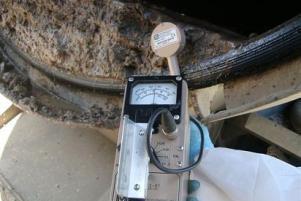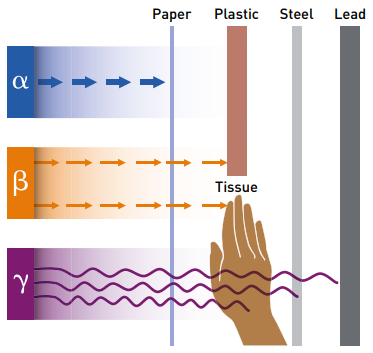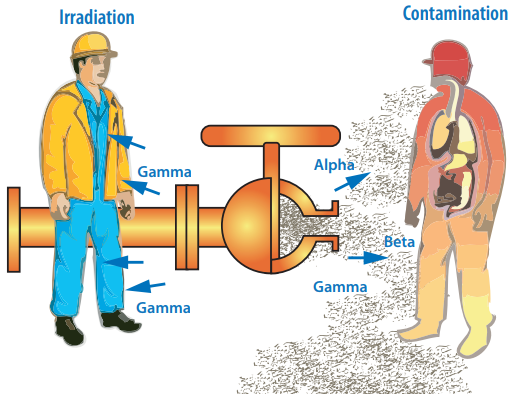Naturally Occurring Radioactive Material
We undertake removal of Naturally Occurring Radioactive Wastes (LSA – Low Specific Activity Scales) from Oil and Gas production pipelines and safe disposal of the same as per Indian rules and regulation pertaining to handling of Nuclear Wastes – Uranium 238 and Thorium 232.

NORM / LSA Scales
NORM Contaminated production and distribution pipeline in Oil and Gas Industry

Radiation Strength
Radioactive Radiation Strength is measured to decide on types of safety gears to be used.

Safe Removal and Disposal
Radioactive scales being removed in safe manner and collected for safe disposal.
One Stop Solution for Decontamination and disposal of Naturally Occurring Radioactive Material / Waste
α-particles
α-particles are a type of ionizing radiation ejected by the nuclei of some unstable atoms. They are large subatomic fragments consisting of two protons and two neutrons identical to a helium nucleus stripped from its electrons. They are a relatively heavy (mass 4), high energy (MeV) particles that are doubly (positively) charged and lose energy very quickly in matter. α-particles will only travel about 2 cm in air and only about 10 μm or less in solid material like human tissue.
γ-particles
γ-photon emission often accompanies the emission of β- and occasionally α-particles due to relaxation of the excited nuclear state, in which the newly formed NOR is created. γ-photons can travel an indefinite distance in air and needs to be shielded with material with a high electron density, like Pb.

β-particles
β-particles are subatomic particles ejected from the nucleus of some radioactive atoms. They are equivalent to electrons. The difference is that β-particles originate from the nucleus and electrons originate from electronic shells (orbitals) outside the nucleus. β-particles have a negative charge of –1 and a mass which is about 1/2000 of the mass of a proton or neutron. The speed of individual β-particles depends on how much energy they have, and varies over a wide range.

Health Hazards of NORM
The health effects of NORM are a function of the energy transmitted to the body as
the α, β or γ radiation dissipates excess energy into living cells, which may result in
cellular damage and genetic mutation.
In the present framework of radiation protection30 31, effects originated by exposure
of humans to radiation are grouped in:
• deterministic effects (harmful tissue reactions) due in large part to the killing/
malfunction of cells and in some instances large quantities resulting in organ
damage following high doses
• stochastic effects, i.e. cancer and heritable effects involving either cancer
development in exposed individuals owing to mutation of somatic cells or
heritable disease in their offspring owing to mutation of reproductive (germ)
cells. This is usually associated with long-term, low-level exposure.
Deterministic effects occur at doses exceeding 0.5 – 1 Gy. These thresholds vary
with dose rate and with radiation quality. The severity of the effect increases with
increasing dose and dose rate. Deterministic effects are mainly associated with
incident scenarios in nuclear industry, industrial and medical use of high activity
sources and X-ray generators and particle accelerators.


